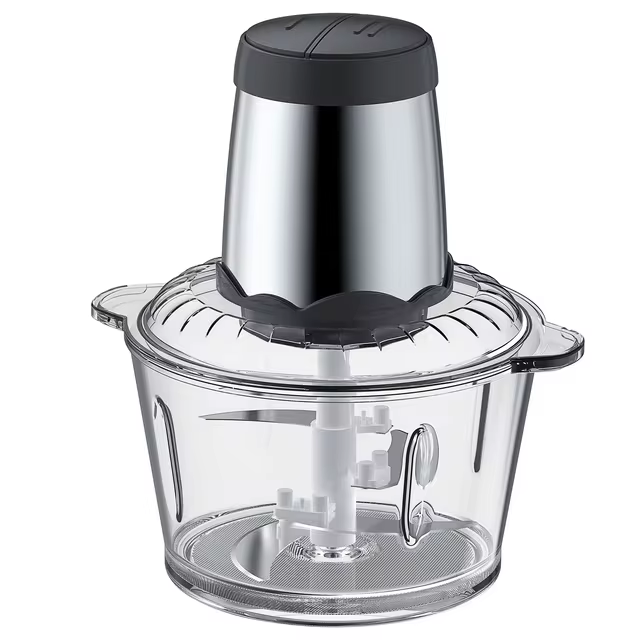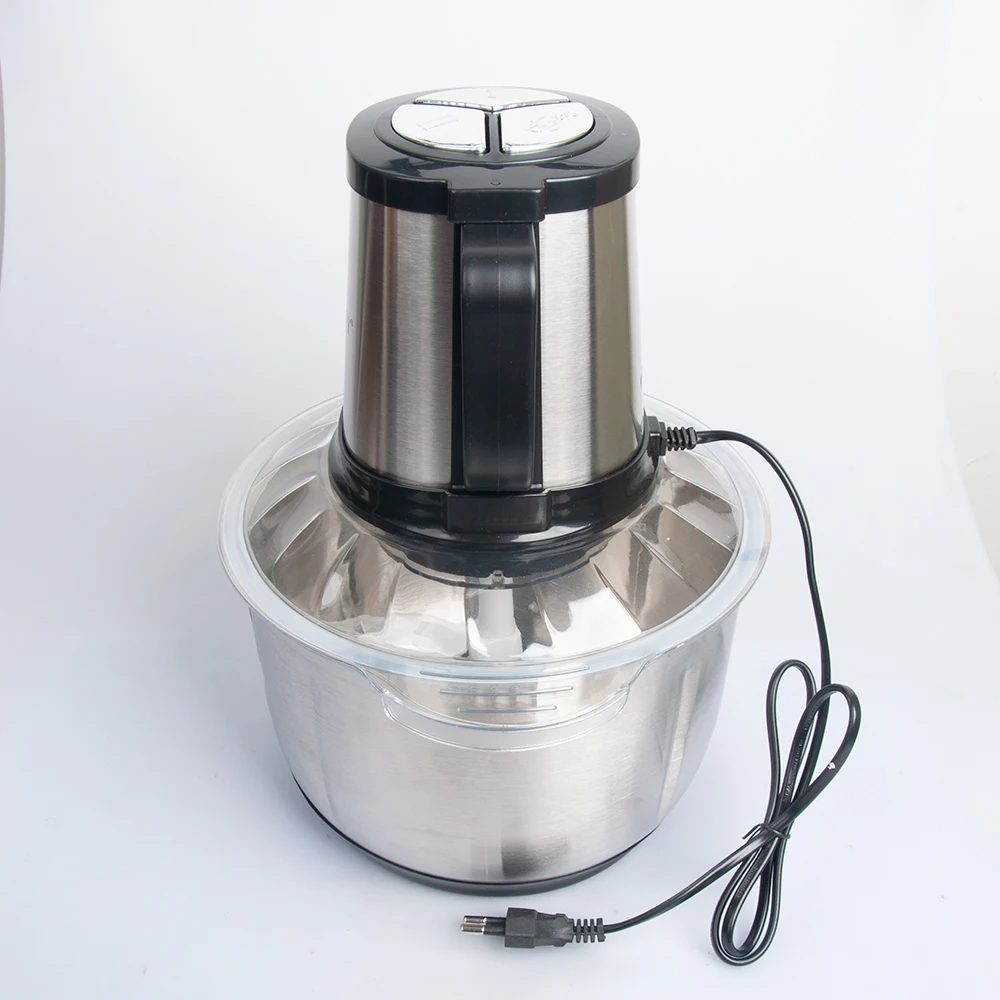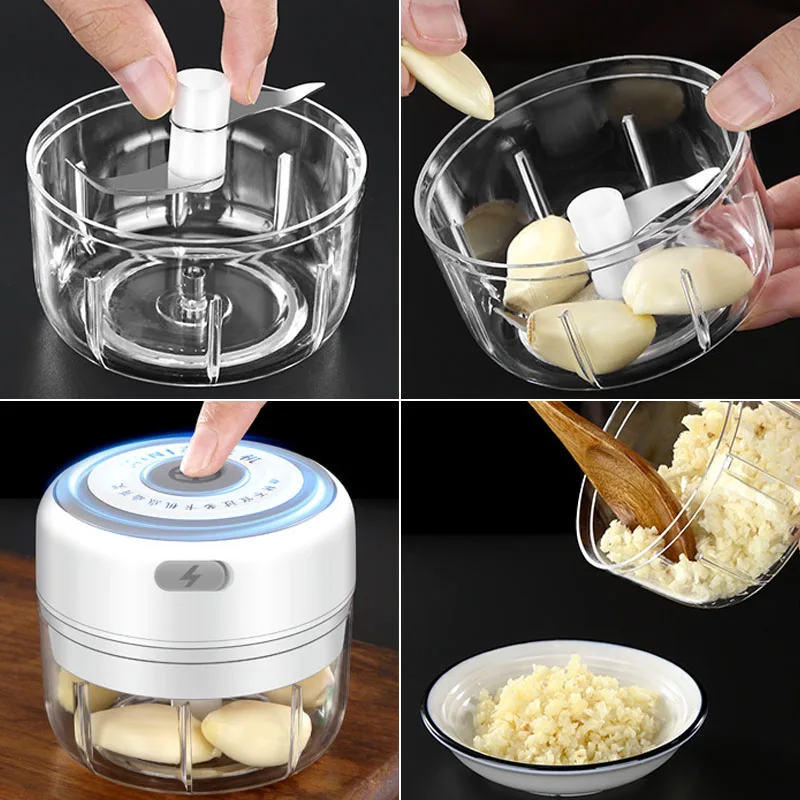
Introduction to Food Processors
A food processor is a kitchen powerhouse, a multi-use gadget that can handle a variety of tasks quickly and efficiently. For those new to this appliance, it may appear daunting with all its different parts and functions. But once you understand what can you use a food processor for, it becomes an indispensable tool in your cooking arsenal.

Understanding the Basics
The primary job of a food processor is to save time. It’s like having an extra set of hands, always ready to chop, blend, slice, and much more. It uses various blades and discs that can be switched out depending on the task. This versatility means whether you’re prepping a simple salsa or kneading dough for bread, the food processor has you covered.
Selecting the Right Model
When choosing a food processor, consider the size and functionality you need. Think about the volume of food you usually prepare and the space available in your kitchen. Larger models handle more food but take up more room. Compact models may do less but save on space.
The Power Behind the Machine
A strong motor is vital for a food processor. It needs the power to manage tough jobs like kneading dough or grinding nuts. Durable, quality material ensures your food processor can last through many cooking adventures.
By integrating a food processor into your kitchen routine, you will find it serves as a trusty companion for many culinary endeavors. In the next sections, we’ll delve into more specific functions, how to choose the right processor for your needs, and share useful tips to get the most out of this versatile kitchen appliance.
Essential Food Processor Functions
Understanding the full capabilities of a food processor is key to optimizing its use in your kitchen. Here’s how a food processor can become your go-to kitchen assistant:
- Chopping: Save time and get uniform pieces by using the processor to chop anything from onions to herbs.
- Slicing: Perfect for creating consistent slices of vegetables and fruits, ideal for salads or cooking.
- Grating: Quickly grate cheese, vegetables, or even chocolate with ease.
- Kneading: Mix and knead dough for bread, pizza, or pastries without the manual effort.
- Blending: Create smooth sauces, dressings, and purees at the touch of a button.
- Whisking: Whip creams or egg whites faster than with a manual whisk. This function is especially useful for making meringues or whipped toppings.
- Grinding: Effortlessly grind meats, nuts, and seeds for various culinary applications.
- Emulsifying: Merge liquids that normally don’t mix, like oil and vinegar, to make perfect emulsions for dressings and mayos.
With these essential functions, a food processor can handle tasks ranging from the mundane to the complex, allowing you to focus on the creative aspects of cooking.
Selecting the Right Size Food Processor
Selecting the ideal food processor size is crucial. It depends on your kitchen’s food prep needs. Also, consider how much space you have available. For small kitchens or occasional use, a compact model may suffice. It’s less bulky and easier to store. What can you use a food processor for? Think of your typical recipes. If you often cook for a crowd, a larger machine can handle the volume. Larger units often come with more features. However, they require more storage space. Remember that a well-chosen food processor becomes indispensable. It makes tasks like chopping, blending, and slicing more efficient. When choosing, balance between size, function, and storage. This ensures optimal use in your kitchen tasks.
Factors to Consider When Choosing a Food Processor
When in the market for a food processor, there are several important factors to consider to ensure you make the right choice for your needs. Here are some key considerations:
- Capacity and Size: Reflect on the amount of food you typically prepare. A larger family may require a food processor with a bigger bowl size. Also, consider your kitchen’s counter and storage space.
- Power and Motor: Opt for a food processor with a strong motor. More wattage means the processor can handle tough tasks, from hard cheese to dough.
- Versatility: Assess the variety of tasks you will use it for. Some processors come with multiple blade options and attachments that can whisk, slice, or knead.
- Ease of Use: Look for a processor with intuitive controls and simple assembly. Easy-to-read buttons and straightforward attachments will make your experience smoother.
- Durability: Choose a processor made with high-quality materials. Sturdy construction will withstand frequent use and the test of time.
- Cleaning: Processors with dishwasher-safe parts save on cleaning time. Easy disassembly helps when you need to hand wash components.
- Safety Features: Ensure the processor has reliable safety locks and non-slip bases. These features protect against accidents during operation.
- Brand and Warranty: Reputable brands often offer better reliability and customer service. A good warranty can secure your investment.
By considering these factors, you can find a food processor that fits your culinary routines and enhances your kitchen efficiency.
Key Tools and Attachments for Food Processors
Understanding the various tools and attachments is crucial for maximizing your food processor’s utility. Each attachment is designed for specific tasks, enhancing the processor’s versatility and your culinary creativity. Here’s a closer look at some essential tools and how they can help in everyday cooking:
Knife Blades
Knife blades are fundamental for chopping and mincing. They can handle everything from herbs to meats, making them a kitchen essential.
Slicing Discs
These discs are perfect for creating uniform slices of vegetables and fruits. They are ideal for preparing salads or dishes requiring consistent thickness.
Grating Discs
Grating discs save time by shredding cheese or vegetables quickly. They are perfect for topping dishes or preparing ingredients for baking.
Dough Tools
For bread-makers, a dough tool is indispensable. It mixes and kneads dough for bread, pastries, and pizza bases efficiently.
Whisk Tool
Whisks are fantastic for making meringues or whipped cream. They provide speed and aeration, achieving lighter, fluffier results than manual whisking.
Citrus Juicer
A citrus juicer attachment allows you to easily make fresh juice. It’s perfect for breakfasts or adding a splash of citrus to recipes.
By selecting the right tools and attachments for your food processor, you can enhance your cooking, reduce preparation time, and expand your recipe repertoire.
Primary Uses of a Food Processor in the Kitchen
The food processor simplifies many kitchen tasks. Here are its primary uses:
- Chopping: It can chop fruits and vegetables quickly. This saves time when prepping meals.
- Grating: Grate cheese or slice vegetables fast with special discs. Makes cooking and garnishing easier.
- Pureeing: Makes smooth purees for soups or baby food. This adds texture to dishes.
- Mixing and Kneading Dough: Mix ingredients for bread or desserts without any hassle. Kneading dough becomes an easy task.
- Emulsifying: Combine oil and vinegar for homemade dressings. This helps in making perfect emulsions.
- Grinding: Achieve ground meats, nuts, or spices efficiently. Useful for making spreads and fillings.
- Slicing: Evenly slice vegetables for salads or casseroles. Ensures consistency in your dishes.
- Making Dough: Create dough for pizza or pie. This saves time and energy.
With these uses, a food processor helps in every step of meal preparation. It can be the difference between a long day in the kitchen and a quick, enjoyable cooking experience.
 Creative Recipes with a Food Processor
Creative Recipes with a Food Processor
Discovering new, creative recipes is a treat for any home cook. A food processor not only simplifies prepping but also opens doors to inventive culinary creations. Below are some ideas that illustrate what you can use a food processor for in terms of creative cooking.
- Pesto and Hummus: Blitz fresh basil, pine nuts, and cheese for a homemade pesto. Chickpeas and tahini blend into a smooth hummus. Flavor these basics with herbs or spices for a unique twist.
- Salsa and Guacamole: Pulse tomatoes, onions, and cilantro for a quick salsa. For guacamole, mash avocados with lime and onion for a perfect chip dip.
- Nut Butters: Grinding nuts like almonds or peanuts yields fresh, preservative-free nut butters. Add honey or salt to taste.
- Energy Balls: Combine dates, oats, and nuts for no-bake energy balls. They make great, healthy snacks.
- Vegetable Burgers: Grind beans and veggies together. Form patties and cook for a healthy, homemade meal.
- Pie Crusts: Pulse flour and butter for an easy pie crust dough. Simply roll out and fill for a homemade pie.
- Mousses and Whipped Creams: Whip heavy cream or blend silky mousses for desserts. It’s quick and gives a luxurious texture.
Experiment with different ingredients and attachments to uncover more culinary possibilities. A food processor is your ally in trying out new recipes or refining old ones. Embrace the efficiency and versatility it brings to your kitchen and watch as it transforms meal prep into an adventure.
Tips for Safely Operating a Food Processor
Safety should be your top priority when using a food processor. Here are some key tips to follow:
- Read the Manual: Before using your food processor, read the manual carefully. It contains important safety information.
- Assemble Correctly: Make sure the food processor is correctly assembled. Check that all parts click into place.
- Use the Feeder Tube: Always use the feeder tube to add food items. Keep fingers away from moving blades.
- Secure the Lid: Never start the processor without the lid securely fastened. This prevents spillage and accidents.
- Handle Blades with Care: The blades are sharp. Handle with caution, especially when washing.
- Unplug After Use: After using the food processor, always unplug it. This avoids accidental starts.
- Keep Away from Water: Keep the base away from water. This protects the motor and electrical components.
- Don’t Overfill: Avoid overloading the food processor. This ensures it runs smoothly and extends its life.
- Hot Liquids: Let hot ingredients cool a bit before processing. This avoids pressure build-up.
- Child Safety: Keep the food processor out of children’s reach, especially when it’s plugged in.
- Wear Proper Attire: Don’t wear loose clothing or dangling jewelry. These can get caught in the processor.
By following these tips, you can use your food processor with confidence, ensuring both your safety and the longevity of the appliance.
Maintaining and Cleaning Your Food Processor
Good maintenance and regular cleaning keep your food processor running well. Here are simple steps to follow.
- Read the Care Instructions: Always read the care manual that comes with your appliance. Each model may have specific needs.
- Disassemble Before Cleaning: Take apart your food processor after use. Separate blades, bowls, and attachments.
- Wash Removable Parts: Clean all the detachable parts. Most can go in the dishwasher; check your manual. If hand washing, use warm, soapy water.
- Dry Parts Thoroughly: After washing, dry every piece completely. This prevents mildew and keeps parts in good shape.
- Clean the Base: Wipe the motor base with a damp cloth. Do not submerge it in water.
- Check the Blades: Dull blades work poorly. Inspect them regularly and sharpen or replace as needed.
- Reassemble Correctly: Put your food processor back together carefully. Ensure everything clicks into place securely.
- Store Properly: Keep your appliance in a dry place. If short on space, look for compact designs.
Regular cleaning and maintenance will extend your food processor’s life and ensure it’s always ready for what can you use a food processor for in your culinary adventures.
 Expanding Your Culinary Horizons with a Food Processor
Expanding Your Culinary Horizons with a Food Processor
A food processor isn’t just for simplifying kitchen chores; it’s a gateway to culinary creativity. When you understand what you can use a food processor for, the possibilities for novel and delicious meals expand significantly. Here are some innovative ways a food processor can elevate your cooking experience:
- Homemade Nut Milk: Make almond, cashew, or oat milk at home. Just blend nuts or oats with water, then strain.
- Vegetable Noodles: Create healthy zucchini or carrot noodles. Use the slicing attachment for quick, easy pasta alternatives.
- Homemade Spice Blends: Grind whole spices like cumin, clove, and cinnamon to create aromatic blends.
- Marinades and Meat Tenderizer: Blend herbs, spices, and liquids to marinate meats. The processor can also help tenderize by breaking down fibers.
- DIY Flour: Grind grains like oats or almonds to make gluten-free flours.
- Fresh Bread Crumbs: Pulse stale bread to make breadcrumbs. Perfect for toppings or binding for patties.
- Dips and Spreads: Beyond hummus and dips, create unique spreads with beans, veggies, and spices.
- Creative Desserts: Craft energy balls, or blend dates and nuts for a healthy treat base.
The power and versatility of a food processor open up a world of culinary adventures. By exploring these uses, you can transform your everyday meals into something extraordinary, all while saving time. So, why not push the boundaries and see what unique dishes you can whip up with this incredible kitchen tool?





